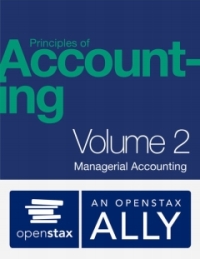Answered step by step
Verified Expert Solution
Question
1 Approved Answer
please help, i do not understand. thank you in advance, means a lot to me. III. Short Exercises 1) For each of the transactions below,
please help, i do not understand. thank you in advance, means a lot to me. 
III. Short Exercises 1) For each of the transactions below, identify whether you would report it as an expense (E), a liability (L), or a "change" item (C), the name of the account that you would use to report it, and on which financial statement it would appear. (Points: 27) a. The farm accountant receives the telephone bill and pays the bill immediately b. The farm operation owes $310 to the local cooperative at the end of the year. c. The farm accountant compares the S500 accounts payable owed at the beginning of the year to the S3 10 owed at the end of the year. d. The farm accountant pays the bill in (b) after the beginning of the year. e. The farm accountant pays the feed bill. f. The farm accountant estimates that the farm operation owes $2,800 in income taxes at the end of the year. The farm accountant compares the $3,100 taxes payable at the beginning of the year to the $2,800 owed at the end of the year. g. The farm accountant pays the income taxes. h. The farm accountant estimates that the farm operation owes $5,000 in interest at the end of the year. i The farm accountant pays off a loan including interest. 2) Identify each of the descriptions below as a characteristic of an operating lease (O), or a capital lease (C), or as an installment purchase (1). Some of the descriptions may apply to more than one. (Points: 39) a. Rental arrangements that do not meet the criteria for a capital lease. b. Special types of leases that, in effect, are installment purchases. c. The buyer obtains the title of the asset at the time of the purchase and then makes periodic payments. d. The buyer obtains the title of the asset after making periodic payments. e. The farm accountant records the rental payments as rent expense. f. One party continues to have title of an asset while another party uses it, but will transfer the title to the party using it. g. The party using the asset has all of the benefits and risks of the owner of the asset. h. The risks of owning an asset remain with the owner while another party uses the asset. i The party using the asset can report the asset along with other owned assets on the balance sheet and can record depreciation expense. j. The party using the asset does not report the asset on the balance sheet and does not record depreciation k. The payments for the asset include interest. | The payments for the asset do not include interest. m. The party using the asset reports a liability 
Step by Step Solution
There are 3 Steps involved in it
Step: 1

Get Instant Access to Expert-Tailored Solutions
See step-by-step solutions with expert insights and AI powered tools for academic success
Step: 2

Step: 3

Ace Your Homework with AI
Get the answers you need in no time with our AI-driven, step-by-step assistance
Get Started


